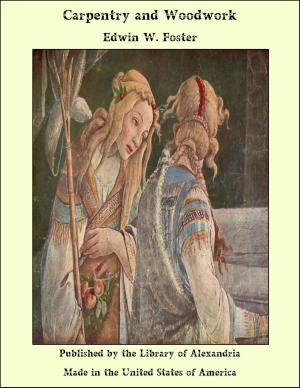The Jute Industry: From Seed to Finished Cloth
Nonfiction, Religion & Spirituality, New Age, History, Fiction & Literature| Author: | T. Woodhouse | ISBN: | 9781465502209 |
| Publisher: | Library of Alexandria | Publication: | March 8, 2015 |
| Imprint: | Language: | English |
| Author: | T. Woodhouse |
| ISBN: | 9781465502209 |
| Publisher: | Library of Alexandria |
| Publication: | March 8, 2015 |
| Imprint: | |
| Language: | English |
The five main fibres used for ordinary textile purposes are cotton, flax, jute, silk and wool; in this group jute has been considered in general as being of the least value, not only in regard to price, but also in regard to utility. It is only under phenomenal conditions which arise from a great upheaval such as that which took place during the world’s great war from 1914 onwards that, from a commercial point of view, the extreme importance of the jute fibre and its products are fully realized. Millions of sand bags were made from the year 1914 to the year 1918 solely for military purposes, while huge quantities of jute cloth were utilized as the covering material for food stuffs of various kinds, thus liberating the Other textile fibres and cloth for equally important purposes. It is on record that in one short period of fourteen days, 150,000,000 sand-bags were collected, packed and despatched from Dundee to be used as protective elements in various ways and seats of conflict. A glance into the records of the textile industries will reveal the fact that the jute fibre was practically unknown in these islands a hundred years ago. Unsuccessful attempts were certainly made to import the fibre into Great Britain in the latter part of the 18th century, and it has been used in India for centuries in the making of cord, twine and coarse fabrics, because the fibre is indigenous to that country. And since all the manufacturing methods there, for a considerable time were manual ones, the industry—if such it could be called—moved along slowly, providing employment only for the needs of a small section of the community on the Eastern shores. The first small imports of jute fibre were due to the instigation of Dr. Roxburgh and the East India Company, but it was only after repeated requests that any attempt was made to utilize the samples of jute for practical experiments The fibre was so unlike any of the existing staples that those interested in textiles were not anxious to experiment with it, but ultimately they were persuaded to do so; these persistent requests for trials, and the interest which was finally aroused, formed the nucleus of the existing important jute industry. Apart from the above-mentioned efforts, the introduction of the jute fibre into Great Britain was delayed until 1822, when the first small consignment reached Dundee—now the Western home of the jute industry
The five main fibres used for ordinary textile purposes are cotton, flax, jute, silk and wool; in this group jute has been considered in general as being of the least value, not only in regard to price, but also in regard to utility. It is only under phenomenal conditions which arise from a great upheaval such as that which took place during the world’s great war from 1914 onwards that, from a commercial point of view, the extreme importance of the jute fibre and its products are fully realized. Millions of sand bags were made from the year 1914 to the year 1918 solely for military purposes, while huge quantities of jute cloth were utilized as the covering material for food stuffs of various kinds, thus liberating the Other textile fibres and cloth for equally important purposes. It is on record that in one short period of fourteen days, 150,000,000 sand-bags were collected, packed and despatched from Dundee to be used as protective elements in various ways and seats of conflict. A glance into the records of the textile industries will reveal the fact that the jute fibre was practically unknown in these islands a hundred years ago. Unsuccessful attempts were certainly made to import the fibre into Great Britain in the latter part of the 18th century, and it has been used in India for centuries in the making of cord, twine and coarse fabrics, because the fibre is indigenous to that country. And since all the manufacturing methods there, for a considerable time were manual ones, the industry—if such it could be called—moved along slowly, providing employment only for the needs of a small section of the community on the Eastern shores. The first small imports of jute fibre were due to the instigation of Dr. Roxburgh and the East India Company, but it was only after repeated requests that any attempt was made to utilize the samples of jute for practical experiments The fibre was so unlike any of the existing staples that those interested in textiles were not anxious to experiment with it, but ultimately they were persuaded to do so; these persistent requests for trials, and the interest which was finally aroused, formed the nucleus of the existing important jute industry. Apart from the above-mentioned efforts, the introduction of the jute fibre into Great Britain was delayed until 1822, when the first small consignment reached Dundee—now the Western home of the jute industry















